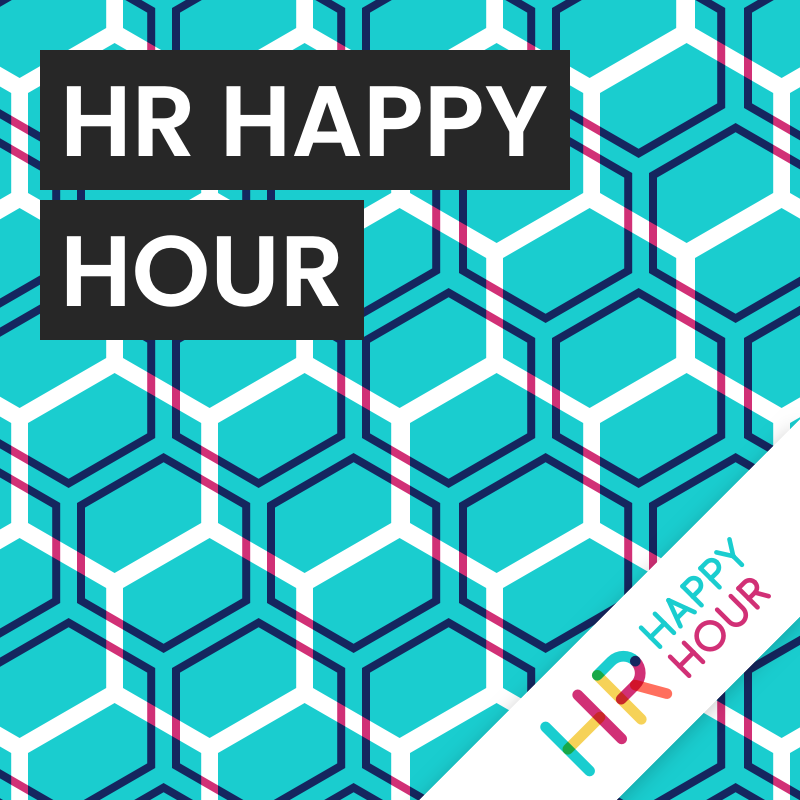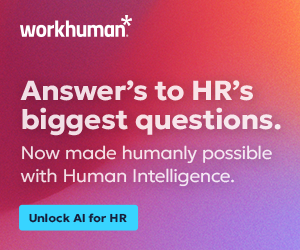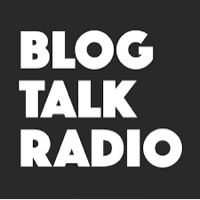Understand the DEI Landscape featuring Culture Amp
Hosted by

Steve Boese
Co-Founder and Chief Data Officer of H3 HR Advisors and Program Chair, HR Technology Conference

Trish Steed
Co- Founder and Chief Strategy Officer, H3 HR Advisors
About this episode
HR Happy Hour Episode 520 – Understanding the DEI Landscape featuring Culture Amp
Hosts: Trish Steed, Steve Boese
Guest: Aubrey Blanche, MathPath and Senior Director of Equitable Design, Product & People at Culture Amp
This week, we spoke with Aubrey Blanche from Culture Amp about their latest report on Workplace Diversity, Equity, and Inlcusion.
– The diverse workforce of the future, and how it can be supported
– Importance of investing in DEI and how this helps the effectiveness of the organization
– Initiatives that are most likely to support diveristy, equity, and inclusion
– Why collecting data and auditing your performance matters
– How connecting with external consultants is correlated with more equitabe and inclusive outcomes
Check out the full report here.
Thank you Aubrey, for joining the show today! Remember to subscribe to the HR Happy Hour wherever you get your podcasts.
Transcript follows:
Steve 0:23
Welcome to the HR Happy Hour Show with Steve and Trish. Today Trish, we have a great show. We’re gonna be talking with our friends at Culture Amp about their latest report on workplace diversity, equity, and inclusion. It’s a deep dive into what’s happening in DEI, not just what’s happening, but what’s working. Right, what’s moving the needle. And I think that’s even more important. But before we get into that, and welcome our guest, Trish, I have a question for you.
Trish 0:47
Okay, I’m ready.
Steve 0:48
If you had access to say, I don’t know, a genie, or the best magic eight ball ever created. And you could know the absolute and total truth to one question, just one question. Which question would you ask?
Trish 1:04
Oh, my goodness, I think you’ve stumped me.
Steve 1:08
I have my answer.
Trish 1:12
All right, I’m going to stick with like, whatever pops in my head first. That’s what I’m going to go with. This is not a monumental question, but it’s on my mind.
Steve 1:20
That’s what you want to know. That’s the answer. Right?
Trish 1:22
I just saw something the other day on this, and it’s is Elvis Presley really dead? Because there is a man that they claim has his DNA right now, an older gentlemen? Yeah. Claiming is Elvis Presley alive. So there you go. That’s right.
Steve 1:40
That’s good. I played with a couple I thought about, maybe did Lee Harvey Oswald act alone? I probably want to know that. But really, I’m curious. I think I probably go with what’s going on in area 51. With the aliens. What’s happening? That’s been really kind of shifty for like 80 years. Now I want to know what’s going on in area 51.
Trish 2:04
Can we throw in the Bermuda Triangle? Yeah, all weird areas.
Steve 2:09
Maybe our guest has something she would like to know. We’ll have to let her ask about it. We will welcome her to the show now to talk about diversity, equity, inclusion and what’s in the great data and research that’s just recently been published by our friends at Culture Amp. Our guest today is Aubrey Blanche from Culture Amp, Trish. She is the Math Path. Right? You know what that is? I’ll tell you. That’s math nerd plus empath, and that’s pretty cool. She’s also director of equitable design product and people at Culture Amp and startup investor and advisor. Through all her work, she seeks to question, reimagine, and redesign the systems practices that surround us to ensure that all people can access equitable opportunities and build a better world. Her work is undergirded by her training and social scientific methods. And her professional expertise covers a broad range of equitable enterprise operations, from talent lifecycle programs, and accessible product development to event design, communications media, and lots more. Aubrey, welcome to the Happy Hour Show. How are you today?
Aubrey Blanche 3:07
So good. I’m so thrilled to be here. Thank you so much for having me and especially to talk about probably my most exciting moment and thing that’s happening in 2022.
Steve 3:18
That’s great. Feel free to weigh in on the question. Aubrey, is there some conspiracy mystery or universal dilemma you love the answer to?
Aubrey Blanche 3:27
Oh, you know what I actually just want to know, like, if Bigfoot and the Loch Ness Monster is real? There have been sightings, and things like that. So I want some proof.
Steve 3:37
I know me too. I was leaning hard on Bigfoot. I did think of Loch Ness Monster, too. I think there’s something going on out there that somebody doesn’t want us to know. Let’s leave it at that. So we mentioned that you’re here to talk about the culture and diversity, equity, inclusion report, understanding the DEI landscape, which just recently came out, before we dive into this report and why it’s so powerful and hopefully helpful for organizations. Maybe tell us from your perspective and your team’s perspective, like why devote all the time, energy and resources to doing the research interpreting the research and writing such a comprehensive report on DEI. What was the reason why you guys decided to invest in this area?
Aubrey Blanche 4:17
I think at the core, the reason is because it’s never been more urgent and more important for businesses to be investing in this. So from a data perspective, you know, what we’re seeing is that the workforce is fundamentally changing. So research shows that for every 100 straight white men that are leaving the workforce, only 66 are entering. So we know that the workforce of the future is more diverse, has a more broad, broader set of needs than previous generations. But we also see that for folks that are going to be making up the bulk of the workforce, that’s millennials and Gen Z, that they have an increasing expectation that their workplaces not only aligned with their values, but are taking positive sort of social impact steps. And then my personal why, which is human dignity matters. And, you know, workplaces have been pretty abusive for a long time in a lot of ways. And so doing this is just the right thing. And I think we’re at a moment in history when people are taking more seriously the impact they have. And the way that work actually contributes to people’s wellness and people’s thriving. And so DEI is a core way that we actually create those types of employee experiences. So Culture Amp is a company that’s, you know, we’re the employee experience platform, where we’re trying to help people feel more fulfilled and sort of awesome at work. And so for us, whether that’s our internal operations, or the way that we’re supporting our customers, DEI is just a non negotiable.
Trish 5:46
You know, I’m so thrilled that you’re bringing all of this data to us for a couple reasons. I mean, you mentioned of course, that it’s, you know, now more urgent and more important than ever before, and I can think back not, not too long ago, unfortunately, where it was really more of just a checklist, check the box, right? Do we have a diversity, and it was just diversity and inclusion at that point, right. We’ve now added equity, we’ve now added belonging and some of the other things to make it a holistic approach. Could you maybe just talk a little bit about how that interest has really gained traction? You know, obviously, it started gaining traction, pre-pandemic, maybe talk a little bit about that. And then what are you seeing result wise in terms of how many companies are actually recognizing this as as an issue? And how many are doing something about that?
Aubrey Blanche 6:35
Yeah, that’s such a great question. And I think actually, some of the data in the new workplace DEI report actually speaks to that. So certainly any DEI practitioners will tell you that there’s a crisis and people care, and then the care kind of falls off. And our data actually shows that. So I think most folks are pretty familiar with, you know, the movement for racial justice that gained prominence in summer 2020. And what our data actually shows is that for every market that we looked at, so North America, APAC and EMEA, that the number of inclusion related questions and employee experience, surveys spiked, after the video of George Floyd’s murder went viral. Now that spike was most pronounced in North America. But what we see is that while that interest has now waned a little bit, North America is still above those pre summer 2020 levels, APAC and EMEA have gone to about their baseline, what we see is that companies are asking more questions about inclusion indicating that it’s, it’s moving up the priority list. Now, what I would say is that there’s a vast difference between companies that say that they care about DNI, right, who have updated their careers page to put a couple more black people on it. And the companies that are actually resourcing and investing in this.
Aubrey Blanche 7:49
So our DEI report shows that many companies, for example, are hosting events and discussions around that. So about 60% of organizations surveyed, understanding that our customers tend to be a little bit more on the on the progressive, sort of social impact oriented and about 60% of those companies have hosted discussion events related to DEI, but only 49% of those have a strategic plan in place around DEI, and only about 40% of those organizations actually have dedicated dei headcount or professional specialist expertise. So I think there’s a lot of companies who are talking the talk on anti-racism and DEI. But there’s a pretty big gap between that sort of walking the talk that we see. And I think there’s a couple of reasons that are important is that some companies, the leadership just doesn’t really care. So, what we surfaced in the data is that white employees, for example, are least likely to believe that inequities are occurring. And because white folks because of white supremacy and structural racism, tend to be in positions of power, that there are some companies that we see that don’t actually care, and are just saying that.
Steve 9:03
I’m sorry to interrupt. There’s a little bit of oh, I, you know, I’m the Senior Director, or I’m the VP or I’m, you know, I’ve done pretty well, I became the controller, right, white guy, right. So sure things must be good, because look how well I’ve done, right? There’s a little bit of that going on, I’d imagine.
Aubrey Blanche 9:18
Absolutely. But I think what our data is also showing us and I think this is really important, is that the majority of companies actually do care. They actually want to walk the talk, but they don’t necessarily know where to start. So our data shows, for example, that 86% of companies believe that dei is valuable, but only 31% of companies are actually measuring the effectiveness of their of their initiatives. And so that means that companies aren’t always making the right investments and moving the needle for their particular company. But what we also see and this is where we need senior leaders to get ready are courageous than to step up is that only 34% of the HR and dei professionals that we surveyed felt that they had sufficient resources to meet the mandates that they have. And so I think there’s a big potential for us to see that companies that truly invest in DEI. Another, the third section of the report actually shows this, that when companies do invest resources in this work, they can move the needle on diversity, equity, and inclusion. So this is complex, but it is nowhere near impossible.
Trish 10:34
You mentioned the 34%, I’m glad you did, because that was one of the the figures I highlighted when I was reading through the report. And can you can you talk a little bit Aubrey, about maybe what do some of those initiatives or support resources look like? Or what are you hearing from clients? What would that be? Would that include learning? What else?
Aubrey Blanche 10:58
Our research in the 2022 report actually goes into which initiatives are most likely to support diversity, to support equity and to support inclusion? And so my favorite finding, to be honest, was actually around what specifically supports building more diverse workplaces? And when I tell you or folks on the line, they’re probably gonna say, Well, of course, because the answer to that is having a DEI policy, having a strategic plan in place, and measuring the effectiveness of your, of your initiatives. And so when you think about that, as a business leader, you say, Well, isn’t that the exact same way we would drive any other type of organizational change. And so that speaks to the idea, this is a lack of will, and not a lack of can. And so that means that for companies that have made those commitments, there’s meaningful things that they can push forward. Now, in terms of equity, what we see are the most effective, the most effective outcomes are things like having clear and transparent promotion processes. And so things like ensuring that there’s clear advancement criteria, that there are mentorship and sponsorship programs, which makes sense to drive equitable outcomes is making sure that we’re overcoming those barriers that marginalized people might face. And then for inclusion, that is exactly where you see the impact of things like having DEI events and dei training can help drive an inclusive atmosphere.
Aubrey Blanche 12:32
But one of the things that I would say to folks is that often companies focus on training without focusing on dealing with the structural equity issues, which is basically never an effective strategy. And if there were one thing I could wish away, it would be unconscious bias training. Our research showed that the majority of DEI training that’s happening is unconscious bias training. And I’m here to tell you as a practitioner, that the research is aggressively mixed, on whether it’s effective, but I can guarantee you if training is the only thing you are doing to limit bias, you are wasting your money and your time of your managers. So it’s really important that any type of training strategy is coupled with things like auditing your performance promotion and pay processes. And I can talk a little bit about in the data.
Steve 13:27
Yeah, thanks for bringing that up. Because that was the next note, I in turn to in my notes, from reading the report was the stark difference between organizations that reported, hey, we are trying to stay on top of pay equity data I have here 55% of organizations said they would do a pay equity analysis on a yearly basis, annual basis, right? That sounds pretty good. Maybe it’s not great. But on the performance side on performance management, sort of auditing or performing processes and ensuring you’re not introducing biases and harming underrepresented groups on the performance slash promotion, I read that as promotion to side a little bit 57% mortgages, they never done it. Right. And so I that’s a pretty stark difference, right? Because it’s one thing to kind of do the math, you’re the math pathway, you can do the math on on pay equity, it’s really kind of just a math problem, I think. But performance equity and looking at those processes is a little bit more complex. And maybe I’d love for you to comment on that finding and maybe maybe suggest some ways that organizations can come look into getting better in that area.
Aubrey Blanche 14:29
Absolutely. Thank you for asking that question. Because I will tell you, I think if if companies do two things on DEI, number one, you must collect data. Number two, audit your performance process. And the reason is because so many things hang off that performance process. So I’m going to talk a little bit about the trends and then I’ll get into specifically we’ll be doing your own performance, which I think there’s a couple of drivers of the trend that you you picked out in the report. And the first is that, you know, for example, there have been changes, especially in North America, where one component actually requires pay equity. So pay equity analyses have become a compliance issue for many businesses. And so it’s not surprising to me that we see a higher level of that we see that in the UK, as well. And we’re also starting to see emerging trends and other markets, pay equity and or performance equity analysis. It’s not something that’s talked about. But we have a saying in the data in the math world, which is garbage in, garbage out. And I think that’s really true, which is if you’re auditing your pay, but you haven’t audited the impact, or the input of your pay, then your statistics might actually be hiding intense structural discrimination.
Aubrey Blanche 15:42
And so that’s why I say auditing your performance process is one of the most important things you can do. Because things like professional development, advancement and pay are processes that hang off often performance ratings. It’s actually the reason I’m in favor of performance ratings, because they are auditable, not having performance management or not having ratings, those things happen in the background, they’re just more likely to be biased filled, and you won’t be able to hold them accountable. But this is something we do at culture amp. So for every one of our performance promotion and pay cycles, we audit all three of those processes from a gender, race, disability, LGBTQ and caregiver perspective, because we see that all of those different types of marginalization. So pay equity analysis, folks, there’s lots out there. For performance equity analysis, what we’re looking at is to statistically determine whether the distribution of performance ratings is a difference between groups. So hypothesis might be our white employees are more likely to get that top rating than bipoc employees. And so we want to audit the process to say is that true? The most powerful way to audit and this is the way that culture amp does it, is we actually audit those scores before manager calibrations. So we give guidance to our HR business partners that if we see an inequity that is to be discussed and rectified in the manager collaboration, so we involve our managers in the process of bias reduction. And once we’ve seen changes from those calibrations, we re audit those processes, so that we feel confident that the process we’ve engaged in has actually resulted in equitable performance or promotion outcome with promotions, which you didn’t ask about, but I’m going to dive in.
Steve 17:29
I think it’s part of that conversation, right? Because we see, look, we didn’t talk about talent sourcing, I’m not sure we’re gonna have time to talk about it. But that’s a very common approach. I’ve organizations I’ve taken to attack these problems, let’s expand our sourcing pool, let’s bring in much more diverse sets of candidates, and therefore let’s make more diverse hires. And that usually works, or at least somewhat works. But then now we start talking about progression through the organization and advancement and access to opportunity, etc, etc. Now, we’re talking about some deeper things here.
Aubrey Blanche 17:56
So like, what you’re talking about to use a phrase that I learned from one of the VPS at Culture, Amp is a lot of companies build the driveway, but forget to build the house. And so that’s really what you’re doing when you invest in recruiting before you invest in culture and advancement is that you have a driveway, but what are you driving up to? But I think, for promotions, the way that I think about it is there’s two factors that you want to audit, you want to look both at the promotion rate. So for example, are disabled and non-disabled people actually advancing through the levels at the same rate, or proportional to their representation in the organization. But you also want to look at what we call promotional velocity, or time to promotion. So what we often see is sure those rates are equitable, but women are taking two and a half years to get that promotion while men are taking two years to get to that promotion. And that can help you dive in. Once you have that data. If you see a gap, you’re able to do a focus group or do some interviews to say, is it that managers are rating things inequitable? Is it that women aren’t putting themselves up for promotion at the same rate they could. So there’s a lot of potential drivers of that. But I think companies that really are invested in DEI, those auditing procedures are some of the most powerful things you can do. Because that allows you to just like we talked about, build a strategic plan that’s custom built to the gaps and the strengths of your organization.
Trish 19:29
What kind of, I guess, feedback or response do you get from clients who go through this maybe for the first time in their organization’s history? Because I’m thinking just you know, there are definitely going to be whether it’s HR professionals or DEI professionals who are versed in this, but maybe they need that little bit of assistance and kind of getting all of the other senior leadership team on board with this idea about really doing these audits, and not just around pay equity but especially around promotion equity. So what do you say to these clients? If they’re either struggling maybe with this or they’ve never done it before? Do you all help them with that aspect of it to like having those conversations?
Aubrey Blanche 20:12
Absolutely. So, we have folks on our team at Culture Amp, who can from our people science team, to our coach’s team, who can guide people to interpret their survey results. But one of the things we also really strongly recommend is working with external consultants and thought partners. So folks will see in the reports, that that using an engaging with external thought partners is actually correlated with more equitable and more inclusive outcomes. And I think it’s really important to tie back to this idea of resourcing that, you know, 60% of the folks that are tasked with the DEI are non specialists, they’re wearing a secondary hat or doing this as part of a secondary shift. Or maybe you’ve unjustly put the work on your ERG groups, your employee resource group leaders, but what we see is that working with those outside partners actually does drive change, because this is a specialized type of expertise to understand different types of equity. And so, again, I go back to this in the report that when companies do put resources into it, it’s actually an incredibly cost effective way to drive employee engagement while being retention. A kind of a cynical comparison, perhaps is, you know, you could spend a few $100,000 on equity and inclusion in your organization, or you could spend a few million dollars on a discrimination lawsuit.
Steve 21:33
Yeah. Or, you know, having a couple of much more people leaving, and that is ridiculous. Look, I don’t want to go we’re not doing a labor market show. I promise. Trish, I promise I won’t talk about this much. But, you know, record number of quits right happening. Right, American and other places. It’s part of this, I think it’s important to keep that in mind as well. I think they, I think the really cool thing about this report, though, too, is just kind of the the through line between what people are, are saying they’re doing, what employees are feeling, and then what’s actually working, right. And it’s very clear as you go through the three, the three separate parts of the culture of DEI report, like you get to, okay, this is where you can really make an impact. And I think that’s pretty valuable, right for organizations who are not just organizations who are like busy and struggling a little bit, but just on a personal level as well. And I think one of the things you mentioned, I’ll be I just want to mention real quick before we were at a time that perked my attention up in the report was caregivers as as a group or as a cohort, whatever is the right way to describe a chart show folks, or have responsibilities in there kind of, at least according to the data are really sort of underserved and their particular challenges, whether it’s childcare or even elder care. And I don’t know if that perked my ears up when I read that I’d love for you. And you mentioned caregiving is something you think about as you are reading performance processes of culture. And I’d love for you to maybe share a thought or two about that that element of the data that you found.
Aubrey Blanche 23:03
Absolutely. Thank you for bringing that up. I think it’s so important. And I think there’s a couple of important things for companies to think about with this, which is, first of all, in the middle of the COVID pandemic, we’re in a mass disabling event. And so we should expect that the needs of caregivers and simply like the the existence of caregiving to go up significantly. And there’s a lot of important intersections with women, and especially bipoc and disabled communities here. So this is a very intersectional group of people we’re talking about. But what we saw is that of the groups that companies are collecting data on, very few companies are actually collecting data on the caregiver status of their employees. And it’s really clear from the data that shows what data companies have and what ERG groups they’re forming, that the more you have data on something, the more likely you’re going to improve the employee experience on that. So it’s a first, the company should begin to collect data on the caregiving. And that’s not only caregivers of children, but also caregivers of adults, elder care. And our research also showed that those are some of the benefits that are least likely to exist in organizations. So well, about 94% of organizations had mental health support, for example, less than 10% had senior care benefits, and less than a quarter had child care benefits, even though that’s something that’s becoming more and more important, and especially important amid the great resignation and the ongoing pandemic of racial justice, as you know, racial inequality as well as COVID-19. And so what I would say is, this is an area that’s ripe for innovation and for greater support and investment in a way that I think will both positively impact employee experience but also drive those things like retention, which are really high on top of mind for business leaders today.
Steve 24:49
Yeah, I was talking to someone recently and they were complaining just that he couldn’t do X, Y or Z will kind of a work thing, because he felt like all he was doing was running around town. Making sure that kid number one was COVID. Negative kid number two was COVID. Negative on a different day. But Kid number three had a different type of test they had to take to go do some other activity. And it was just consuming his life, right, essentially. And it was yeah, I couldn’t really relate. But I understood.
Aubrey Blanche 25:17
Absolutely. And there’s even a pattern in our data to show that we have a hypothesis about this pattern. So in the gender trends that we saw, for women, women’s ideas about their careers, prospects, actually improved year over year from 2020 to 2021. But we think that that could be due to what we call a survivorship bias. So women who were supported and had good career prospects were more likely to stay in the data. Well, we know that there’s been a huge shift of especially women leaving the workforce needing to do caregiving in the middle of this pandemic. And so that speaks again to the potential retentive and experienced benefits of investing in childcare support. Because well, we think that caregiving is is gender agnostic, we know that women tend to do the majority of the caregiving.
Steve 26:06
Just one more question for me, maybe Trish has one more too. But one other finding, I’d love to highlight. And again, I would encourage everybody to go to the Culture Amp website and cultureamp.com these will, links will be in the show notes download the entire week, we can only scratch the surface of this report the data plus also the findings and the conclusions. But there’s one more I would love for you to comment on. And this is just making the recommendation. I believe that’s how maybe it was phrased that way, maybe not. But that di DEI specific surveying is much more valuable than more generalized employee engagement surveying, which probably organization’s been doing for 50 years. Now. Who knows? I’d love for you to maybe expand upon that, just that that particular element.
Aubrey Blanche 26:46
And for folks who don’t know, in DEI serving as Culture Amp’s bread and butter, so it’s one of the things we live and breathe every day. But really, what we see is that is that dei specific serving is correlated with greater inclusion in the workplace. And this makes sense, so well. And the reason for that is because inclusion is a pretty complex experiential topic. And so it requires multiple questions to understand what’s happening. So for example, in Culture Amp’s DEI survey, we have an outcome factor of inclusion that measures things like psychological safety, belonging, respect, and feeling valued dedication to mission and commitment and alignment to that. But then we also have a set of 18 other questions that provide guidance about what’s driving that outcome? Because well, this is to quote Tolstoy, you know, every every happy company is happy in the same way, every unhappy company is unhappy in its own way. And so when people will say, I have a lack of inclusion, what do I do? I, as a consultant, as a leader, I always say, you know, well, it depends on what’s broken, I need to look at that data to understand what isn’t working for you, so that we can design custom strategies to begin to close those gaps. So in the same way, that you wouldn’t just take a generic playbook to do go to market for your SaaS product, right? You need to know who’s your market, what’s not being served? What pain points do they have? What are their distribution channels?
Aubrey Blanche 28:11
It’s the same thing with DEI, which is what’s working, what’s not. And then how do we close those gaps. And so I think that it’s about intentional surveying. And a best practice that I usually tell folks, we’ll get into some actionable stuff is running a full inclusion survey, once a year is a great cadence. But I often suggest pulsing on those three to five biggest impact questions, quarter or on a bi-annual basis to give yourself some feedback on a more consistent basis, because you can’t always fix everything. But I will talk for just a second about the culture and platform because I was a super user before I was an employee. It’s why I chased the company down was was really the, you know, the culture and platform actually takes that guesswork out of it. So we have something called, you know, factors and driver analysis, what we actually say is for your organization, based on the outcomes of this inclusion, or engagement survey, here are the three or four most impactful areas invest in and so that’s what I would say is, when you’re looking to do that, don’t do everything. But find the two to four things that are most impactful to driving equity and inclusion in your workplace. And those become the strategic themes. That’s the basis of that strategic plan that you want to build. And always, always, always consider intersectional identities. And if you have to prioritize tackle racism first.
Trish 29:42
Very good. You know what, thank you for sharing all of that. Because I think that sometimes when you look at a topic like this and an organization that were maybe the leaders No, this is not something that is working for us right now, but we just are overwhelmed. We don’t know what to do. We don’t know where to start, you’re right, having that partner that’s going to have the background and have the experience and the data and the processes, right to point you in the right direction. So thank you for mentioning, especially focusing in on those 2-3-4 things that are most impactful to guide your strategy, because I think if you, if you do just go out there and Google some checklist, you’re not going to have any results that are measurable, that are impactful, and you’re not going to fix anything, right. And I think that’s what a lot of companies have done over the years, it’s sort of just looking to see, what is everyone else doing. So I liked your point about, you know, we each have a really unique, probably set of problems that lead to a certain situation within the organization. And so understanding the specifics are really critical.
Steve 30:46
Yeah, I definitely encourage everyone to go out to the cultureamp.com site, download the report, spend some time with it, because we we will not have time to get into it. But we didn’t really talk about LGBTQ at all, we didn’t really talk a lot about some of them, there is amongst the experience between, say black Americans, Latin X and Asian, you know, Asian plays having to do with some of the organized kinds of movements that have sprung up last couple years. So it’s all in there, though, and encourage folks to go out there and check it out. There’s this is data too, by the way, I wanted to throw this out there. Culture Amp has worked surveyed over 2100 organizations, 1.1 million folks participated in this, right. So this, the data set is huge. And so really, it helps us to really understand these bigger trends and what’s actually moving the needle here. There’s so much fun, Aubrey, we could probably do another whole show on this, maybe we should revisit some of the things.
Trish 31:42
We didn’t get a chance to talk to you, but in a few months, let’s do that.
Steve 31:45
Let’s give folks a chance to go out there go out to cultureamp.com to download the report, learn more about the survey the data and try to start taking some steps to make some improvements that organizations operate. Aubrey from Culture Amp, this has been so much fun.
Aubrey Blanche 31:58
This has been an absolute honor to talk to you, thank you so much for just bringing this data helping us bring this data to life. And, you know, we’ll keep fingers crossed, I will always come back and hang out with such a wonderful crew. But really the goal what we hope for is that this helps dei practitioners and advocates and business leaders make more impact and improve the world of work for the better.
Steve 32:19
Awesome. Well that’s great. That’s a great kind of good way to send it off. Good way to kind of close out the show. So again, cultureamp.com for the report all the details learn more about what’s happening there. Trish, really good stuff, good to see you. You’re on the mend. You’re almost 92% healthy again.
Trish 32:37
By the time this airs, I will be good. I love it. All right.
Steve 32:41
As a reminder, you can subscribe to the Happy Hour Show wherever you get your podcast and all the show archives everything all the shows. At hrhappyhour.net for Aubrey Blanche at Culture Amp, for Trish Steed, my name is Steve Boese. Thanks so much for listening to the HR Happy Hour. We’ll see you next time and bye for now.
Transcribed by https://otter.ai
Talk to us
If you want to know more about any aspect of HR Happy Hour Media Network, or if you want to find out more about a show topic, then get in touch.









